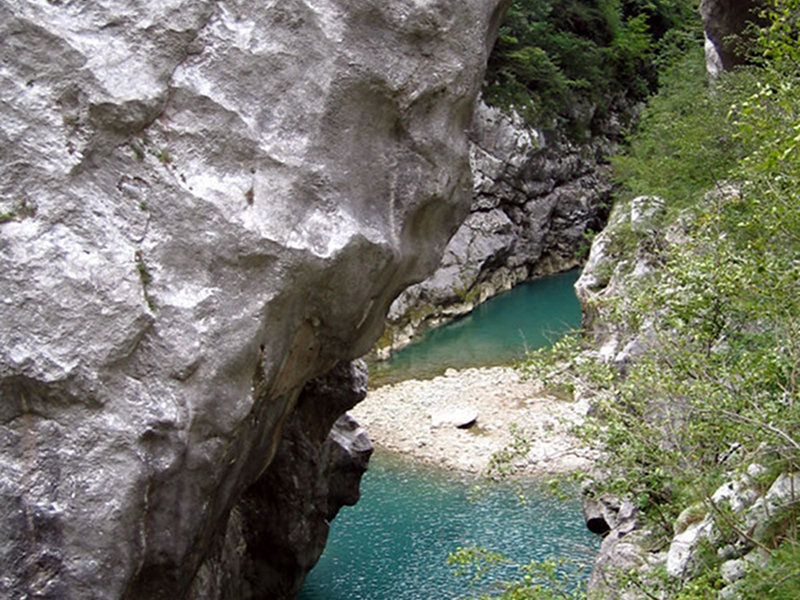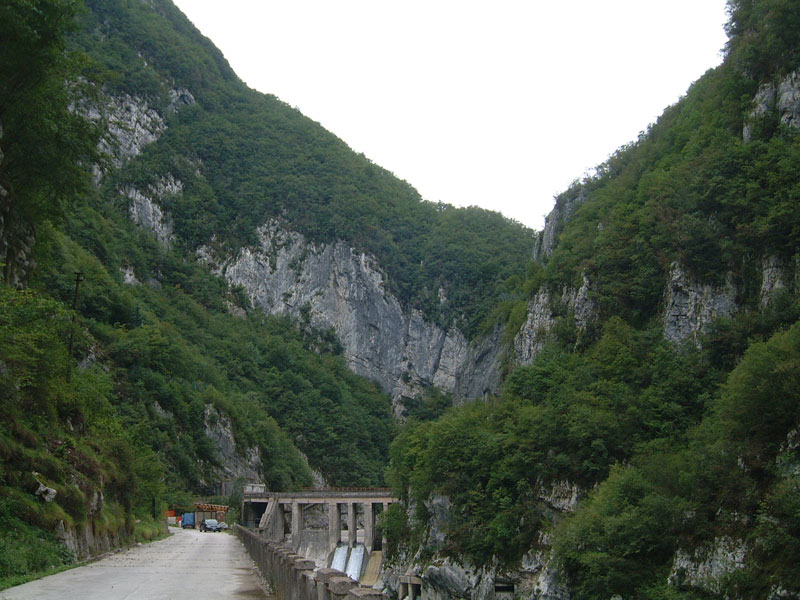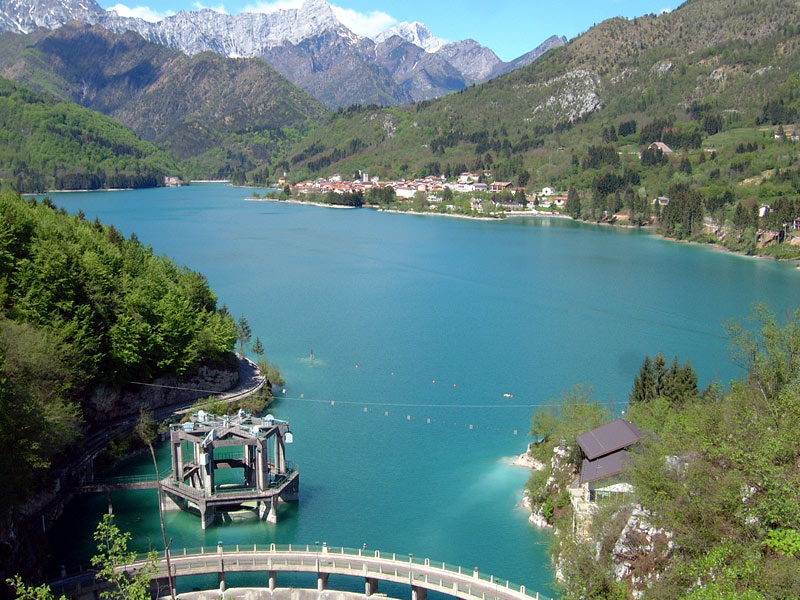Riserva Naturale Forra del Cellina
www.riservaforracellina.itPoints of Interest
The old road of Valcellina
History of the connections between Valcellina and the plain
One of the most characteristic aspects of Forra del Cellina Nature Reserve and, more in general, of the stretch of valley between Barcis and Montereale Valcellina is without a doubt "the old road".
Its charming plan crosses the whole Reserve and gives the opportunity to observe the spectacular results of the erosion carried out by the stream, which has slowly shaped the landscape by digging the narrow ravine between Mt. Fara and Pala d'Altei.
The history of "the old road of Valcellina" and the development of the nearby mountain areas are strictly linked to the big infrastructures created to exploit the water of the stream Cellina: these facilities have had a direct or indirect impact also on the social and economic life of all the Municipalities of the valley.
The Towns
Andreis
At the exit of the gallery, there is one of the "living museums" of the mountain civilization. A town laying on a green terrace, protected by the "cuirassiers" Raut, Resettum, Fara. Stone walls, dark wood platforms, and outdoor ladders are the unmistakable features of the characteristic house of Andreis.
Barcis
The town gathers along a consistent terrace urban weave facing the lake. Along the shores there is a trail, at the shadow of the fir trees, ideal for picnics.
Montereale Valcellina
It is the gateway to Valcellina: here the plain of Pordenone area ends and Forra del Cellina Nature Reserve begins.
The Hydroelectric Power Plants of Cellina
These plants have been built in different moments since the beginning
of the 20th century with the building of the "old dam", the inlet rill,
and the power plant of Malnisio.
The dam had to divert a part of
the waters of the stream Cellina towards an inlet rill (of about 7 km)
built along the ravine to supply the power plants of Malnisio (1905).
Downstream, the waters were then diverted to the power plants of Giais
(1908) and then to Partidor (1919) to be returned to the stream Cellina
near the town of San Leonardo.
The above-mentioned plants have been the first "industrial" plants in
Italy and they were in use until 1988. The hydroelectric energy
produced in the power plants of Malnisio was transferred, through
high-voltage lines, to the towns of Venice, Treviso, and Udine.
Within the development plan of already existing plants, in the early 1950s SADE (Società Adriatica di Elettricità) built the
dam of Ponte Antoi, so that the artificial lake of Barcis could supply
the power plants built near the "old dam" (1954). From the reservoir of
Barcis the waters are still conveyed through a pressure gallery with a
diameter of 3.9 m and a length of about 2 km, dug in the rock of the
mountain separating the course of the stream Cellina from Sella del
Dint. The channel crosses Molassa ravine with a concrete bridge-pipe to
reach the piezometric well from which the two pressure pipes supplying
the Kaplan turbine groups-vertical alternating current generator leave.








